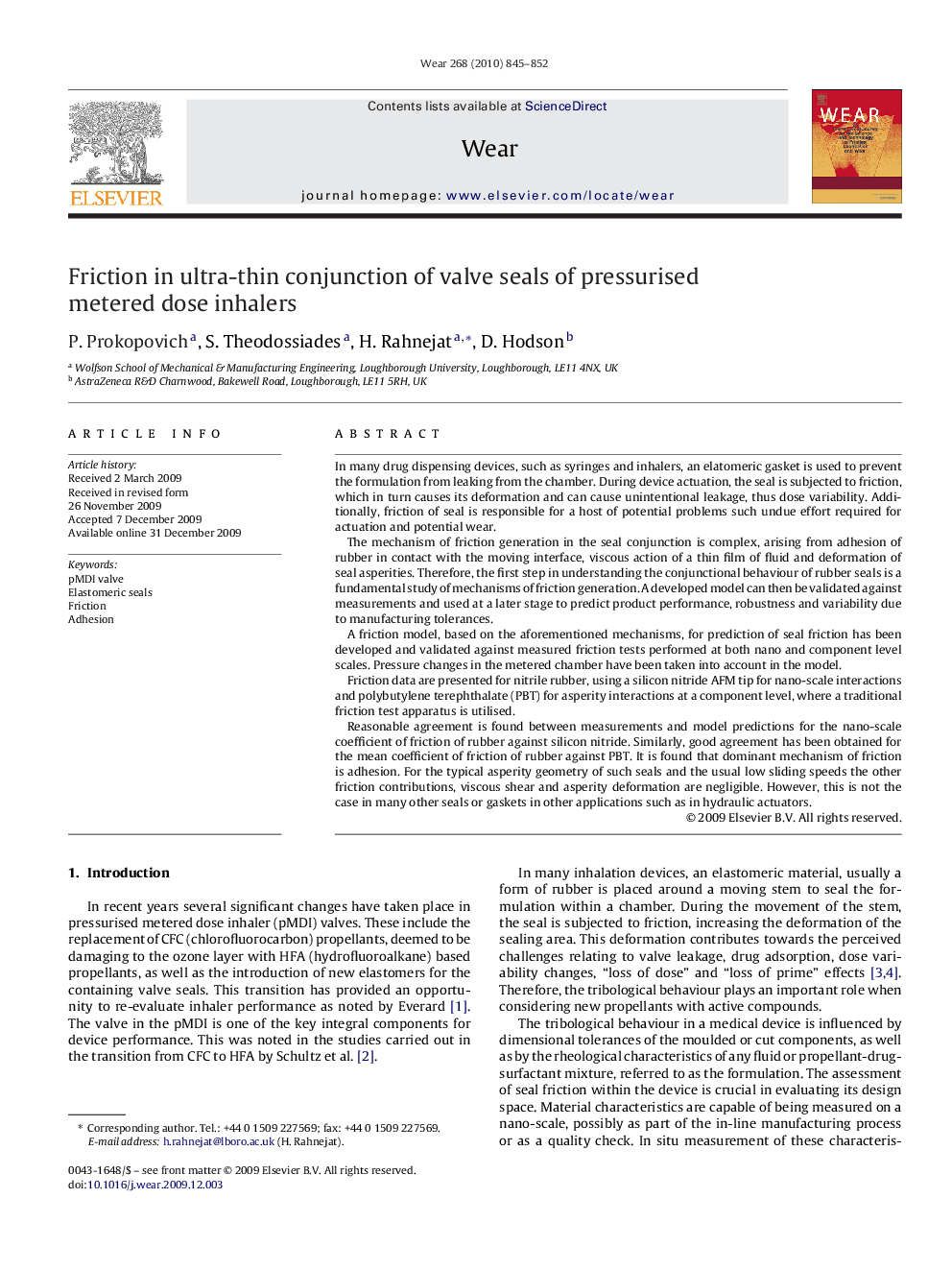| Article ID | Journal | Published Year | Pages | File Type |
|---|---|---|---|---|
| 618454 | Wear | 2010 | 8 Pages |
In many drug dispensing devices, such as syringes and inhalers, an elatomeric gasket is used to prevent the formulation from leaking from the chamber. During device actuation, the seal is subjected to friction, which in turn causes its deformation and can cause unintentional leakage, thus dose variability. Additionally, friction of seal is responsible for a host of potential problems such undue effort required for actuation and potential wear.The mechanism of friction generation in the seal conjunction is complex, arising from adhesion of rubber in contact with the moving interface, viscous action of a thin film of fluid and deformation of seal asperities. Therefore, the first step in understanding the conjunctional behaviour of rubber seals is a fundamental study of mechanisms of friction generation. A developed model can then be validated against measurements and used at a later stage to predict product performance, robustness and variability due to manufacturing tolerances.A friction model, based on the aforementioned mechanisms, for prediction of seal friction has been developed and validated against measured friction tests performed at both nano and component level scales. Pressure changes in the metered chamber have been taken into account in the model.Friction data are presented for nitrile rubber, using a silicon nitride AFM tip for nano-scale interactions and polybutylene terephthalate (PBT) for asperity interactions at a component level, where a traditional friction test apparatus is utilised.Reasonable agreement is found between measurements and model predictions for the nano-scale coefficient of friction of rubber against silicon nitride. Similarly, good agreement has been obtained for the mean coefficient of friction of rubber against PBT. It is found that dominant mechanism of friction is adhesion. For the typical asperity geometry of such seals and the usual low sliding speeds the other friction contributions, viscous shear and asperity deformation are negligible. However, this is not the case in many other seals or gaskets in other applications such as in hydraulic actuators.
